Over the Easter weekend Brettel Road headed north 3 hours to the York MRC exhibition. 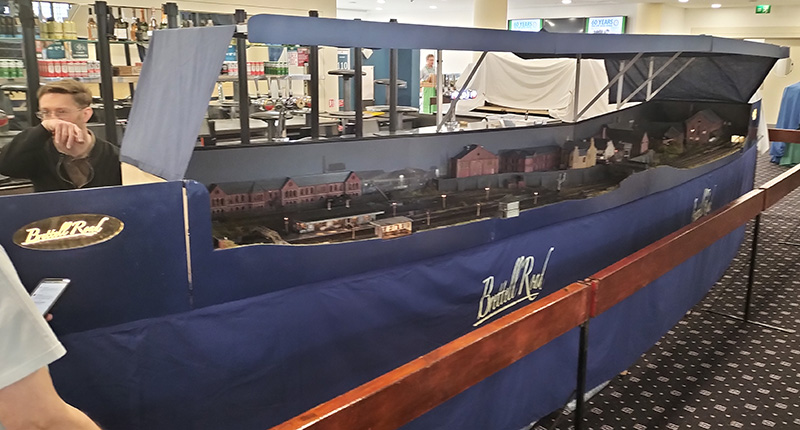
Despite a minor cardiac event at 5pm on the Thursday evening when it looked like the van may not be available due to a medical emergency set up went smoothly. Little did I know what was to come over the next 3 days.
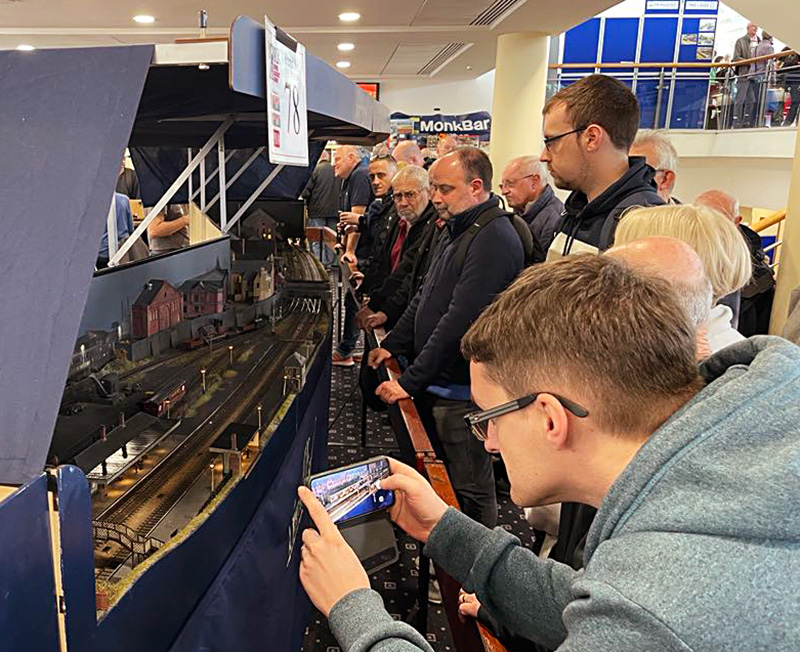
We had problems! The biggie was that the cassettes were still not reliable, to the point where they were the worst they have ever been. Despite this the guys battled on against the layout that was absolutely determined to fight us ever step of the way (thanks again chaps). There was a problem with the main point into the yard behind the station which I did manage to patch up on the Saturday afternoon and the track in the yard under the bridge (of course it was!) had become damaged. Something we didn’t notice until a member of the public kindly let us know. The whole show was a mixture of frustration and some degree of embarrassment really that the layout was performing as smoothly as the proverbial bag of nails. Despite all this we did still attract a lot of interest throughout the 3 days and many kind compliments were received along with 4 or possibly 5 requests to take it out to more shows so I guess from the public side of the barrier it didn’t seem quite as disastrous as it did to me. Thanks to the guys at York MRC for having us and looking after us so well. The elements of the weekend that didn’t involve the layout were great!
Diagnosing the problem
The problem with the cassettes was two fold and wasn’t something we could really address at the show. Brettell Road actually has 45 cassettes in total in 3 different sizes.
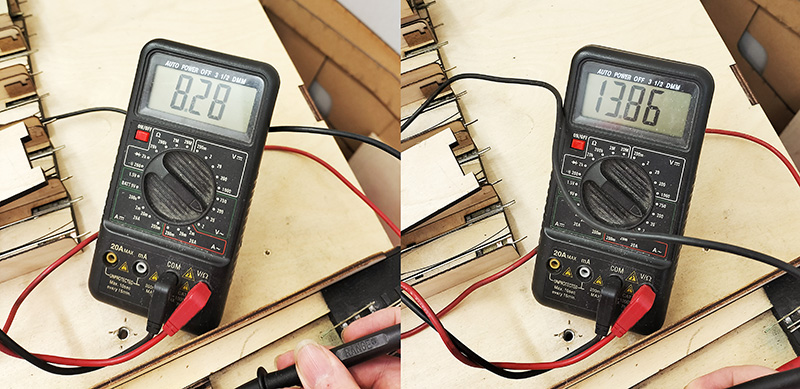 When I built and tested them originally, I tested them for resistance using the buzzer in my volt meter. What I didn’t test was if there was any voltage drop or not. On the left are 3 loco cassettes of the design we had at York showing a voltage drop of over 5 and a half volts or as good as 40%! Little wonder it caused us grief. On the right a revised design tested on 3 cassettes with no loss of volts at all.
When I built and tested them originally, I tested them for resistance using the buzzer in my volt meter. What I didn’t test was if there was any voltage drop or not. On the left are 3 loco cassettes of the design we had at York showing a voltage drop of over 5 and a half volts or as good as 40%! Little wonder it caused us grief. On the right a revised design tested on 3 cassettes with no loss of volts at all. 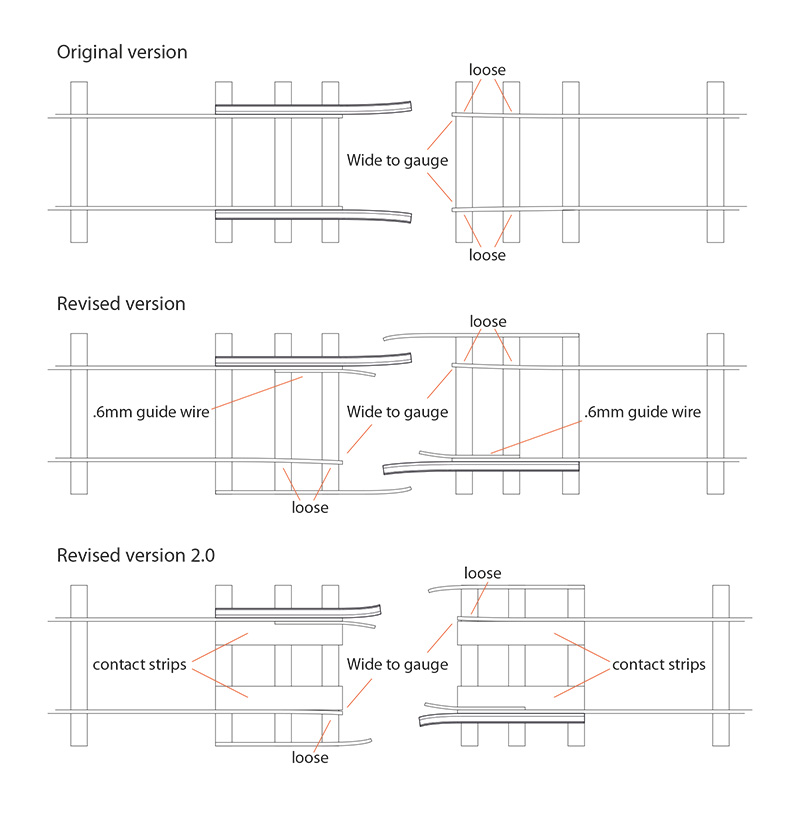 A little diagram of my cassette evolution. The top design is what I used on the short version of the layout and that seemed to work fine. As these cassettes were single ended I also fitted a light to them so that we could see that they were electrically connected.
A little diagram of my cassette evolution. The top design is what I used on the short version of the layout and that seemed to work fine. As these cassettes were single ended I also fitted a light to them so that we could see that they were electrically connected.
With version 2 I wanted them to be double ended and introduced the idea of smaller loco cassettes. This had 2 effects. While on version 1 the rails were squeezed tightly by the guide rails on the revised version the fit was less positive. The second effect is a loco cassette doubles the number of connections. If everything is really clean they work just fine however in the real word things don’t stay really clean for long. Because of the design, the bits I needed to keep clean were hard to get to and the sort of area what would naturally collect dirt and crud. The loose stock rails were also still prone to go the wrong side of the guide wire and I found many had failed at the soldered joint on the third sleeper in exaggerating the problem. I guess my absolute minimal solder approach I use when building kits isn’t such a good idea in this application.
The solution is to add contact strips from 0.2mm thick, 5mm wide copper that fold down the front giving a much bigger contact area that, just as importantly is easier to get to to keep clean. I also reduced the length of the rails that stick out and soldered the loose rail to an extra sleeper so it doesn’t move as much. The cassettes are kept in compression when on the layout by a simple peg (actually cheap, small screwdrivers) fitted into holes drilled into the baseboards.
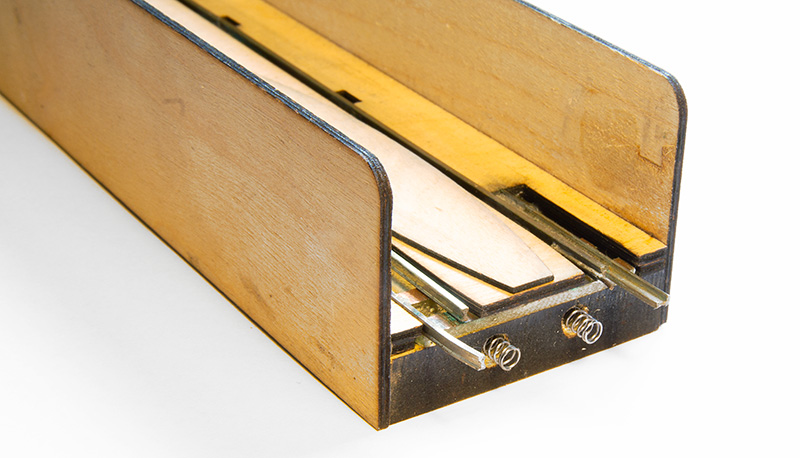 Now this is a bit belt and braces but on an exhibition layout thats never a bad thing. Rather than just rely on the springiness of the copper strips I drilled holes behind them and fitted a couple of spring (actually springs from smiths coupling hooks that id been saving for some unknown reason).
Now this is a bit belt and braces but on an exhibition layout thats never a bad thing. Rather than just rely on the springiness of the copper strips I drilled holes behind them and fitted a couple of spring (actually springs from smiths coupling hooks that id been saving for some unknown reason).
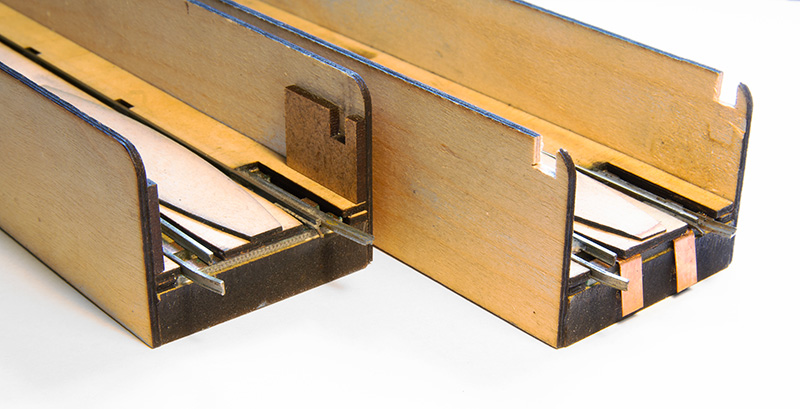
Before and after. The little side parts that hole the cassette ‘buffer stops’ were still causing problems so I’ve decided to remove them completely and redesign the stops.
 I also took the opportunity to move the cassettes back a little and extend the lead in roads as we were having derailments coming onto the layout at both ends. This may have been the cassettes or it may have been something else. Originally I had check rails here but tests of the new sections without them is making me think they were unnecessary.
I also took the opportunity to move the cassettes back a little and extend the lead in roads as we were having derailments coming onto the layout at both ends. This may have been the cassettes or it may have been something else. Originally I had check rails here but tests of the new sections without them is making me think they were unnecessary.
